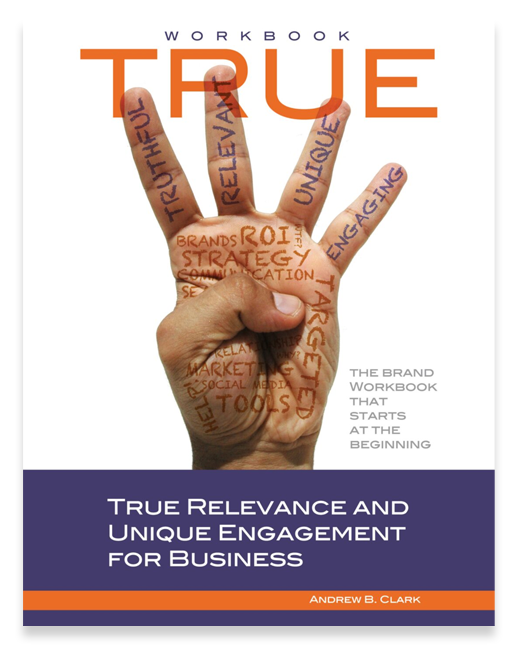Interview: Our Communications Future
I’m at “that age” now. I can see into the Communications Future! (for what it’s worth)
Yep. My eldest daughter is in college, and I’m THAT parent. The parent that the Coe College freshman communications class turns to for “Industry Insight.”
While I’m somewhat honored, It’s really making me feel my age. I’ve spent 25 years in the communications industry, 25 years as a communications “Professional.” HA… While I would never consider myself an “Expert,” I s’pose I could call myself “Professional” at this stage in the game. 🙂

When I started, back in the early 90’s, I looked at the folks my age (45-ish) and said “I’m going to get the hell out of this business before I look worn out and haggard like them…” That was like yesterday to me… I guess I was having more fun than “THEM” looked. Here I am 25 years later and I’m being interviewed by my daughter’s freshman communications class about what is is I’ve been trying to do for a quarter century… I received questions on the past art of communications and communications future… Humbling.
I never saw myself here …
What I did see, from the interview, was some pretty substantial insight. I even surprised myself.
Is communication dead? No. Is communication ever going to be the same…
Hell no!
…not with my daughter bring up the flag… 🙂
Check out the interview:
RHE 125
Professor Donofrio
24 September, 2013
Interview Guideline
Interviewee: Andrew B. Clark (President and The Brand Chef at CreateWOWMarketing, LLC)
E-mail Address: Andrew@createwowmarketing.com
1. Can you explain to me what you believe communication today consists of?
Communication for business, as well as socially, has become products of the technology we as a society so highly depend on today. From mobile devices to web-based interactions, the way we communicate, compared to just a decade ago, has evolved to short bursts of consumable content that is delivered instantaneously to any number of portals connected to the business or individual. No longer does society tolerate delay or have the patience for a cycle of communication to evolve from thought to idea to comment to composed statement requiring thoughtful and considerate response. Posts, Tweets, comments, Vine videos and Instagram have created a digital communication flow that is high in volume, but low in actual engagement or substance.
a. What do you believe to be the most important aspects of today’s form{of communication}?
Audience and engagement is everything when it comes to communications. “Be where the audience is,” is a statement I was taught at a very early stage in my career. Then, it meant be in front (literally) of your target audience through newspaper, television, radio and trade print and events. But as technology has shrunk the world to a “Byte-Sized” box in the palm of our hands, the need and ability to be everywhere at once has become the standard.
Through digital communications tools like Facebook, YouTube, Vine, Instagram, Twitter, and Pinterest, the ability to “Be where the audience is,” has taken a decidedly less social aspect for strategic communicators like us. You no longer need to “physically” be where the audience is, NOR is your physical presence even wanted (most times). Your digital footprint has become the base of your communications and the value your audience sees in that will determine at what level they allow engagement with you and your brand.
i. Why do you find them important?
Importance is subjective. What one client / person needs for true engagement differs from the tools needed to engage in a different market or industry. Socially, the tools like Facebook, Twitter and Instagram have become staples to staying informed and engaged with friends, family and associates. While tools like Blog/Websites, LinkedIn, YouTube, and Facebook have become the standards for business communications. Why? Because THAT is where the audience is.
Readership of print marketing has become immeasurable in some cases. The digital world has taken the deep commentary and the researched news of “The Gazette” or “The NY Times” to 400-word blurbs posted through a feed reader on someone’s iPad. If the consumer can’t “get it” through a 140 characters, a 2-minute (or less) video or hasn’t been shared by someone else in their circles, the story is worthless. The chances of the reader engaging in that post have been left up to attention-grabbing headlines (sometimes sensationalized) and the “Virality” of the story. If the content isn’t being developed for 10-second digestive tract that is the human consumer these days, it will simply become the long tale of the internet, relegated to strategic keyword fodder and search engine optimization for the publication’s Website.
b. How have evolving forms of communication affected the way you run your business?
The life-cycle of communications has been shortened to blink. As a professional communicator, if I can’t engage the audience (on behalf of my clients) in a matter of seconds, I’ve lost the opportunity. This has forced my industry to become more nimble in our strategies, our development process as well as our evaluation and expectations for a campaign
2. In what ways do you think that communication today is different from communication when you first started in this field?
Without sounding like a caveman, when I started this career, computers were only found in huge corporations and took up entire rooms with walls of spinning discs and blinking lights. Now, that entire room fits on a thumb-drive – one of 4-5 I carry with my laptop, iPad, iPhone, and Pebble watch. When I started in this industry, I went home from work and left my drafting table, pens and markers at the office at 5pm and didn’t worry about them until 8am the next workday. Now, I’m answering emails and redrafting ad copy at 2AM and producing short films in a week instead of months it took just 15 years ago.
Today’s communications has become non-stop, instant and demanding. I challenge anyone under the age 30 to put down their mobile device and spend the weekend “disconnected.”
a. Based on the changes you’ve already experienced, how would you predict the field to change in the future?
The future of communications will go two ways:
1) While we continue lose the grounding element of The Greatest Generation and The Baby-Boomers, communications will become more integrated into every aspect of our lives. The tradition of “face-to-face” communications will dwindle, making society as a whole less physically engaged. From structural and environmental integration with digital panels and virtual reality making its mark (think Holodeck on Star Trek), to deeper connectivity with our personal lives, the tools of communication will become literally a PART of us – it’s not a far leap from wearable technology to implants.2) The communications divide we face today – sociologically, physically, culturally will disappear. Wile the physical aspect – hand shakes, hugs, eye contact, etc. – of communications our parents and grandparents hold so dear will become nothing much more than pomp and circumstance, the ability to communicate across all divides will become the standard.
Already, we’re seeing the scope of story-telling change from national to international and on to global with current digital delivery systems. When technology becomes prevalent throughout the world, the ability to bring all humans together in a united conversation will be possible. With a digital handshake, students at Coe will be able to partner with Students in Kenya to learn, research, partner around cultural differences and communicate a singular message to the World. Digital communications will have the capability to solve conflict before it starts; discover new sustainable strategies for regions suffering from any number of maladies or ecological shortcomings.
While all of this sounds very hippy-dipy and Kum-by-ya-ish, it will, though, still be up to the humans driving the digital devices to focus on the humane advantages and not the inane applications. That will remain to be seen.
3. Tell me about the process you use to explain today’s communication techniques to your clients.
I have the unique advantage to be on the bubble of the technological revolution for communications. I can see from my days in the darkroom and drafting tables in Dows to the screens I work on today, the connection communications has with technological advances. With that, I’m able to “connect the dots” for my clients that either don’t understand the technology or don’t understand the art.
For those clients that can’t see the path to reaching their audience through these various digital platforms, I get to train them on the pest practices for their communications strategies. Who, what, when, where, how, and why are still the basis of communicating their stories. It’s my charge to make them understand the delivery systems are just the tools in which they’re delivered.
For the other side of the coin, the clients that “get” technology and just want to use the tools, I have the honor of backing them up to educate them on how to tell their story. While they may “get it,” their target audience is only in a handful of places. Without strategy, targeting and good storytelling, any digital tools used will be that… just a tool.
a. Explain to me some of the techniques your clients have trouble with.
One of the biggest hurdles we face with our clients if trying to keep the story “digestible.” As I mentioned before, the attention span and the tolerance for information has become shorter and quicker with the integration of digital delivery. If “hook” of the story doenst hit the reader/listener/viewer within the first sentence or 7-10 seconds, we’ve lost their attention.
b. Can you tell me why you think they have trouble with these?
While we talk to our clients about “telling their brand story” they initially assume story means campfire tales passed down from generation-to-generation. We explain that while THAT is where it started, many delivery systems don’t allow for spinning yarns of history, great battles with giants and the slaying of dragons. THOSE stories need to be delivered once the audience is hooked. So we tip the communications process on it’s top, moving to the “Taa-Daa” moment much earlier in the tale and then give the details as support.
4. Would you say that communication today is more or less important than it was twenty years ago?
MUCH MORE IMPORTANT.
a. How is it more/less important?
With the onset of digital connectivity communication has been labeled as “instant and easy.” I’d like to correct that statement and say, “Digital connectivity has made speaking instant and easy, but communication has become more challenging.”
There’s no longer a filter on what is said through digital tools like Facebook, Twitter and others. Communication is not simply the dissemination of a message. It’s a two-way street that invites perspective, thought and engagement. With physical communication losing ground, the ability to perceive intention and define intent is even more of a struggle. Many in this generation and those to come will need to be taught the strategies behind communication. Engagement needs to be encouraged. Communication needs to be taught
I want to thank Coe College, 1 – for inadvertently guiding ME to this career in communications. It all started with a couple silly cartoons in The Courier (Coe’s Student-Run Newspaper) and steamrolled through my life from there. And
2 – for allowing my daughter to attend and enjoy the love and excitement that IS Coe College. Considering all of my own transgressions, I’m very happy you even allowed her on campus. 🙂 She is going to achieve more and make your institution (as well as her parents) incredibly proud!
Thanks to my daughter, Madison Clark for the opportunity to share my “wisdom” with her class. The questions were insightful and thought-provoking. I’m curious to hear the input from others you interviewed. I hope your old-fart-of-a-dad makes you look good. 🙂
What say the rest of you? Do you agree with my perspective on communications? Do you see the future as I do or is your picture slightly – or drastically different? Post a comment. Make a note, Share, tweet…
Whatever you do… COMMUNICATE!
Keep Cooking,
Andrew B. Clark
The Brand Chef



Andrew, great essay! I’m not sure I agree with all of your conclusions (I actually see a reversal in the digitization of interaction and choice, as people realize it’s less dependable than the old media interactions it replaced, and far less reliably true than face-to-face experience), but that’s the beauty of making prognostications about the future…you CAN’T be wrong! Your ideas are well thought-out and presented, and I enjoyed reading them.
Also, having just sent our firstborn to college this year, I’m THAT parent, too. Weird and wonderful times.
Thanks, Jonathan!
That’s the beauty of our industry, the message will be distributed and the delivery vehicle (in my personal opinion) will be the choice of the end users of that generation.
With that, Face-to-face is becoming more foreign to Gen-Y and millennials. I have watched my daughter and her friends as well as my younger children resort to Facebook and Youtube for “current events.” leaving the newspaper or even online pubs untouched. With the dissolution on traditional print media and the sensationalization of broadcast media (Fox, CNN, et al), where will the truth and accuracy be found?
I believe communication – accurate and meaningful communication – will be a challenge over the next decade and beyond. The conversation will be controlled by the users, but are the users ready for that responsibility? Or do we just follow Kanye and the Kardashians into the bowels of hell?
Food for thought…